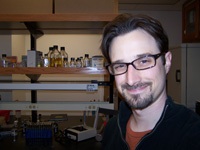Ben Kerr

One of the hallmarks of living organisms is the change they induce in their abiotic and biotic environments. For instance, earthworms affect soil structure, beavers build dams, bees construct nests, trees lower light levels under their canopies, butterflies pollinate flowers, etc. Through their development, physiology, and behavior, organisms alter the world in which they live and these effects can feed back to influence their ecology and evolution. This process has been labeled niche construction (or, alternatively, ecosystem engineering). Using a combination of analytical, simulation-based and lab-experimental techniques, my collaborators and I have focused on biological systems that possess strong niche construction elements: (1) fire-prone flora with plant traits that enhance flammability, (2) learning organisms that alter the form and frequency of their stimuli, (3) bacteria that produce anti-bacterial toxins, and (4) hosts and pathogens that continually coevolve. Recently, we have focused on how the incorporation of spatial structure can drastically affect the eco-evolutionary dynamics of these and other niche construction systems. In particular, I am extremely interested in how altruistic forms of niche construction evolve in relation to various forms of population structure.
Contact
Mailing Address
Department of Biology University of Washington Box 351800 Seattle, WA 98195 USA
Office and Lab
- Office: 559 Life Sciences Building
- Office phone: 206.221.3996
- kerrb [snail] uw [period] edu -> mailto:%20kerrb [snail] uw [period] edu